Collars for dogs: what are there and how to choose?
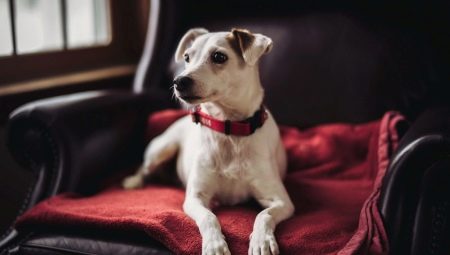
Collars are a necessary part of a dog's harness and come in a wide range. A large selection of various models allows you to choose an accessory for all occasions of a pet's life, from training to participation in exhibitions and publication.

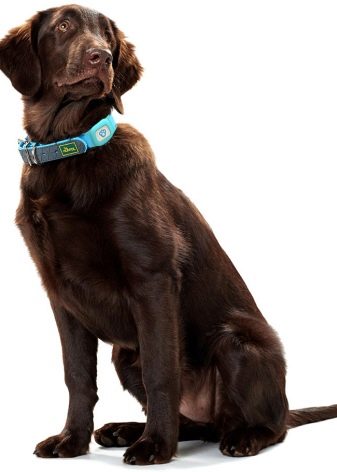
Collar purpose
A dog collar has several functions. Firstly, it is designed to restrict the freedom of movement of the animal, and in combination with a leash is the main means of control over the dog. This is, perhaps, the most important functional purpose of collars and harnesses, and ensures both the safety of others and the pet itself. Secondly, the collar often performs a decorative function and acts as an obligatory accessory for a dog's participation in competitions and exhibitions.
In addition, the collar is used to correct the behavior of the animal during training and walking, to attach a name tag with the owner's address and phone number, as well as to control the animal in the dark (luminous models).
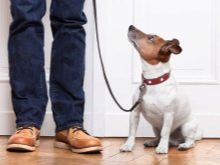
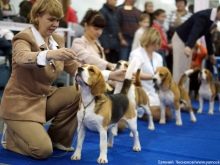
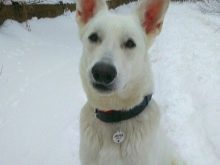
Views
Dog collars are classified according to several criteria, the most important of which is their functional purpose. According to this criterion, several types of ammunition are distinguished.
Everyday
These models carry an exclusively practical function and are distinguished by a simple design, wear resistance of the material and a comfortable grip. These collars are designed for permanent wear and differ durability and affordable price. Structurally, the products represent a narrow leather or textile strap with a leash snap hook and a belt buckle.
The main qualities of everyday models are their reliability, resistance to abrasion and high-quality riveting of metal parts, which makes it possible to use such collars for a long time.

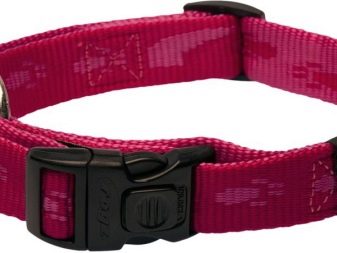
Exhibition
To participate in exhibitions, dogs acquire a special collar - a ring, which is a loop-like structure that is tightened around the animal's neck at the slightest tension on the leash. These collars are often equipped with an "Adam's apple", which prevents the dog from lowering its head when performing.
This type of collar has a rather narrow specialization and is not used for everyday wear.
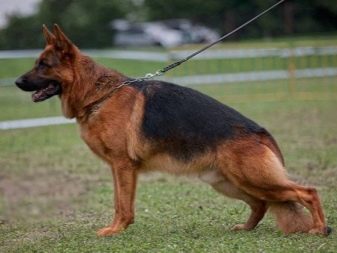
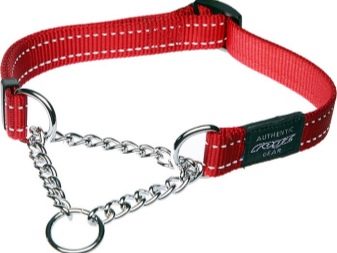
Training
These collars are designed to correct the behavior of an adult pet, as well as to educate puppies. Training models are subdivided, in turn, into a number of varieties, which differ from each other in principle of action and design.
Straight collars or parfors
They represent a leather or metal strap with spikes directed inward. The length of the thorns can be very different and is chosen depending on the density of the animal's coat. For example, for Malamutes, Newfoundlands, St. Bernards, Moscow Guard and Caucasian Shepherd Dogs, it is necessary to choose models with the maximum length of spikes, which, due to a too thick "collar", will not cause physical harm to the dog, but will only cause quite noticeable discomfort when pulling the leash.
Powerful short-haired dogs such as the Staffordshire Terrier, Bull Terrier, Great Dane and German Boxer will do. "Stroach" with short and rounded thorns, which also does not inflict physical harm on the pet, but quickly disciplines it.
When trying on a dog with a strict collar, it should be borne in mind that in a calm state it should hang freely around the neck and not be back to back. An adult animal, as a rule, does not take off the collar, so you can not worry about this.
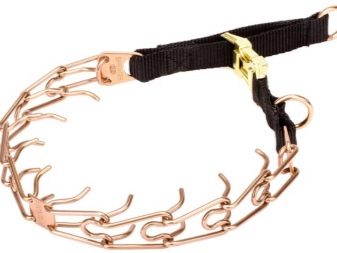
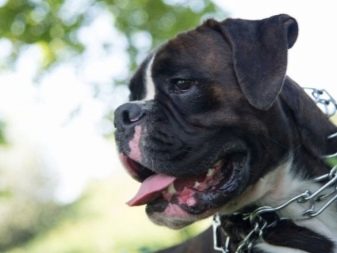
Strangleholds
They are made in the form of a freely sliding loop that tightens around the pet's neck with every sharp movement, and, according to the principle of action, resemble a ring. These models are used for non-aggressive, but too active dogs, who do not want to walk next to the owner and strive to gallop forward. There are also half-chokes, which are a less radical version of the choke. These models are equipped with a stopper, due to which the loop is not fully tightened, but only to a certain level, and does not cause severe discomfort to the animal.
The same category of collars includes jerk chains - strangleholds made of metal links. Such models are much more effective than ring and textile straps, as they cause much more painful sensations to the animal.

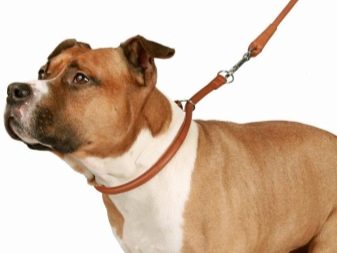
Halti
Also referred to as a halter, it is a great alternative to a noose and prevents the animal from pulling on the leash. The design is a pair of loops, one of which is put on the dog's neck, and the other on the mouth. The hinges are interconnected by rigid straps located at the level of the pet's cheeks. The leash is attached to the lower part of the loop, which is located on the bow.
When the dog tries to pull on the leash, its head will automatically turn back, preventing it from accelerating. In addition, halti from the outside looks like a muzzle, although it does not perform its functions at all.
However, if others are too worried at the sight of a dog, and the animal for some reason cannot wear a real muzzle, then the halter helps to avoid many claims and reproaches.

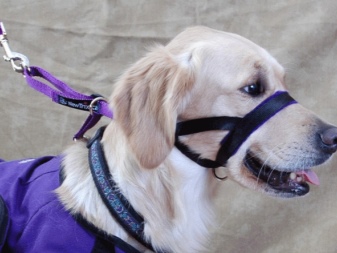
Electronic Shock Models
Equipped with a remote control and a built-in battery, which is enough to send a light electrical impulse to the animal in case of disobedience or non-observance of commands.This method of training causes a lot of controversy among dog breeders and has both supporters and opponents.
Some dog handlers argue that the discharge that a dog feels is comparable to a mosquito bite, while others, on the contrary, are confident that the animal experiences a terrible fear of the next discharge, as a result of which it becomes depressed and fearful.
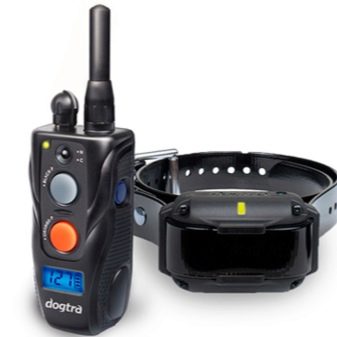
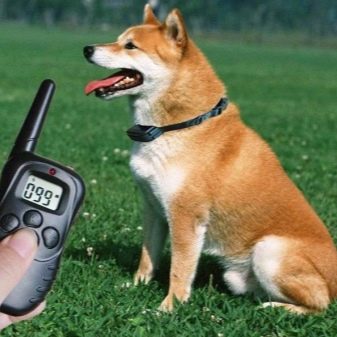
"Antilay"
The collar also belongs to correctional models and helps to wean the dog from excessive "talkativeness". In comparison with previous models, it acts on the animal more humanely, sending a stream of water or a vibration (sound) signal to the pet who is barking idle. However, many experts believe that the use of the device suppresses the animal's natural reaction to external stimuli, expressed in the form of barking, and therefore causes irreparable harm to the dog's psyche. As a result, the animal can get a nervous breakdown and even get physically sick.
Therefore, the use of this model can be justified in case of emergency and for a short period, for example, when a dog barks in the middle of the night and does not allow the entire entrance to sleep or when transporting an animal on a long-distance train.
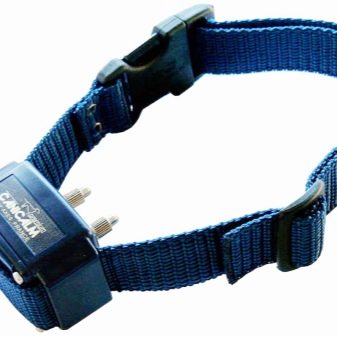
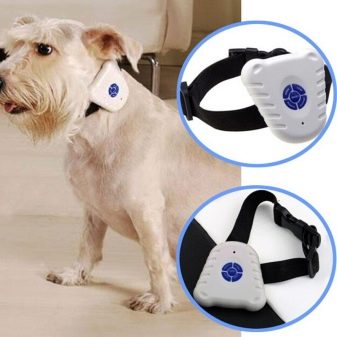
With GPS tracking function
Collars allow you to find out the exact location of a lost pet via satellite communication. Often, such models are equipped with a GSM SIM card, to which the owner of a missing dog can send an SMS and receive the coordinates of the pet's location in a reply message. For collars that do not have SIM cards, a special application is installed on the owner's phone or laptop, in which the exact location of the dog can be tracked via the Internet.
For owners of many breeds, prone to regular escapes and vagrancy, such a collar will be a real boon and will allow you to quickly and accurately find a fugitive.
In addition, models with GPS trackers have been highly regarded by hunters, who use them to locate the location of hunting dogs chasing game.
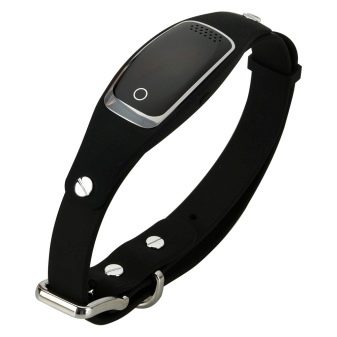
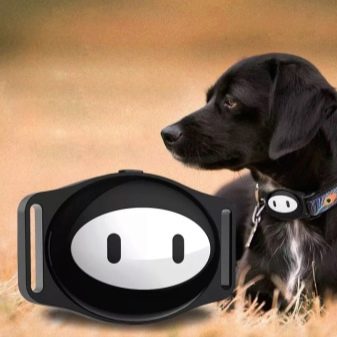
Glowing
Collars are based on LED strips, bulbs or beacons. Many models are capable of working in several modes, like a New Year's garland, and can stably burn, flicker or blink. The same category of collars should include reflective models or products with a light-accumulative phosphor coating, glowing in the dark.
Such collars will not allow you to lose sight of your pet while walking in the dark, and will not allow it to fall under a car.

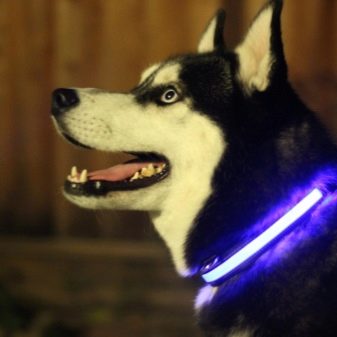
Models with a healing effect
They protect the pet from the appearance of fleas and ticks and are used, as a rule, only in addition to the main collar. However, for the sake of fairness, it should be noted that such products do not give a complete guarantee of cure from parasites and should be used in combination with other means.
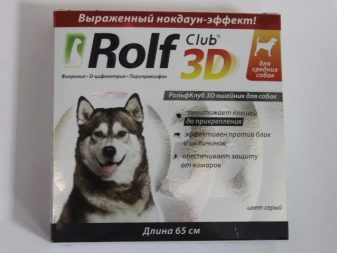
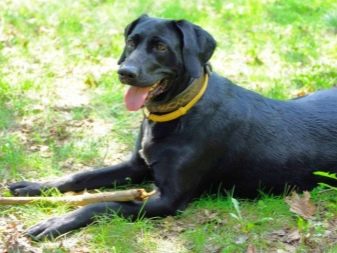
Decorative patterns
Commonly used for small dogs such as Yorkshire Terriers, Pomeranian, Chihuahua and Toy Terriers. The items are beautifully designed and are often encrusted with precious and semi-precious stones.
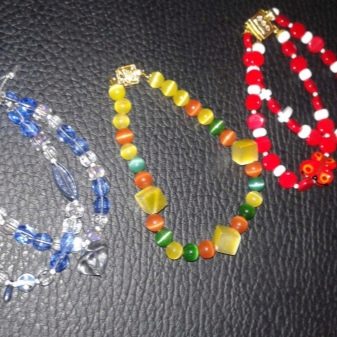

Calming
A collar with pheromones is specially designed for dogs who are too restless and impressionable, who have a hard time being separated from their owner, who are nervous when visiting the veterinarian, and who are anxious when there are loud noises and car trips.
During operation, the product exudes pheromone - a substance released by lactating bitches during communication with newborns. Dogs remember this smell for the rest of their lives and when they smell it, they immediately calm down.
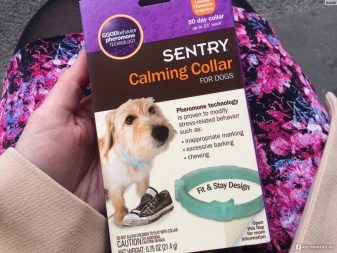

Collars with a load
They are mainly used for building muscle mass and strength training for pit bulls, Staffordshire terriers, sometimes Dobermans and other breeds that need to be bumped. With the help of such models, the pet pumps the muscles of the neck and chest and gets maximum physical activity on each walk.
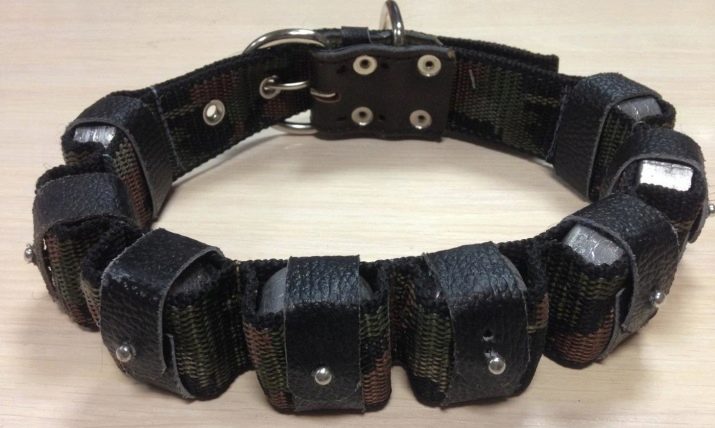
Collar with retractable handle
Allows the owner to quickly take control of the dog when walking off a leash. These models are most often made from waterproof nylon and dyed in different colors. When the handle is no longer needed, it is immediately pulled back into the collar and does not interfere with the pet from running and playing.
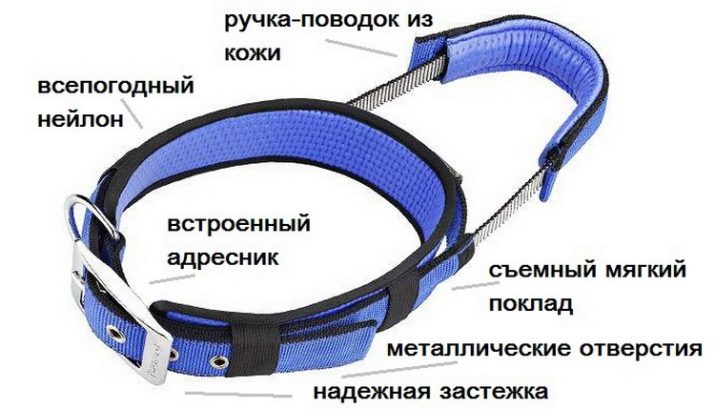
Materials (edit)
Modern manufacturers of dog harness produce collars from different materials. Below are the advantages and disadvantages of each of them, as well as the scope of use of the product from a particular material.
- Leather collar is the most common dog gear and is used for pets of all breeds and sizes. Wide models made of genuine leather are great for large and heavy dogs as an everyday option. Leather products are distinguished by their aesthetic appearance, can be painted in different colors and can serve for several years.
Models made of genuine leather with various decorative inserts from multi-colored stones look interesting, but they are more often used for small dogs and more perform a decorative function.
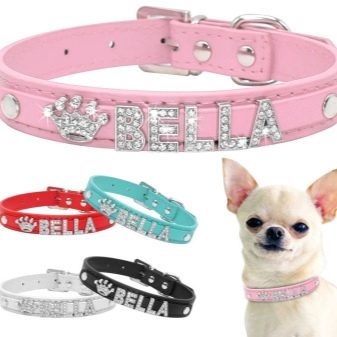
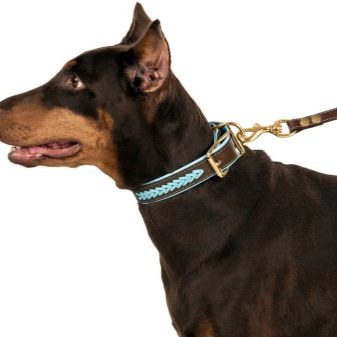
- Textile collar is a great option for a small cute pet. Such models are often trimmed with sequins, decorated with bows and decorative buttons. Products are capable of ennobling any dog and giving it a unique charm, however, there is no need to talk about high strength in this case: textile collars are worn exclusively for "going out".
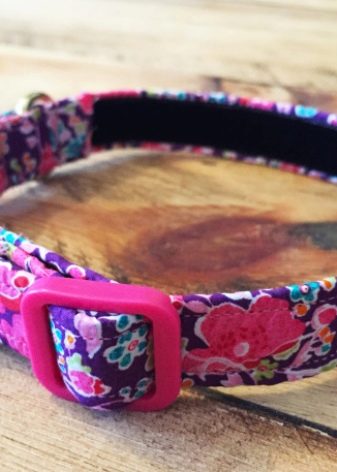
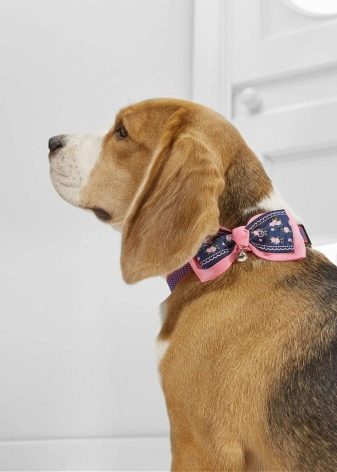
- Canvas collar Made from natural cotton threads and sewn with heavy duty nylon line. Models do not stretch, tear or shed and are quite suitable for large breeds that have protective or guard duties.
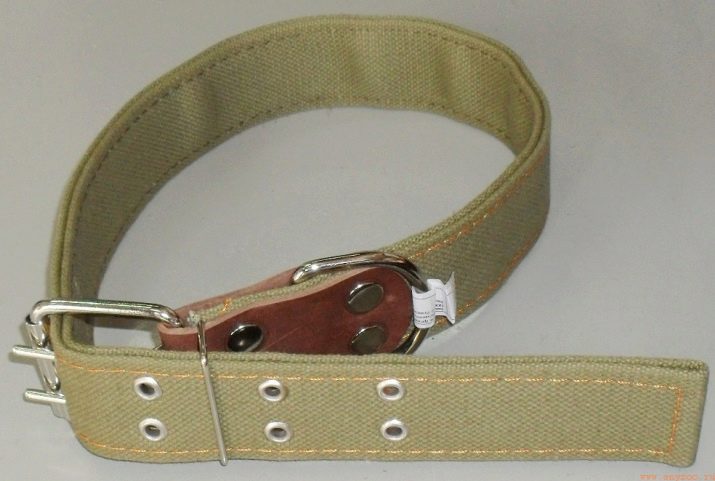
- Nylon collar significantly outperforms its tarpaulin counterpart in quality and attractiveness and is available in a wide range of colors. The synthetic models come in a wide variety of sizes and can be used for all breeds of dogs.
Braided models made of paracord - a nylon cord - were especially fond of the owners. Such products are capable of withstanding a load of up to 290 kg and are too tough for even large and vicious dogs.
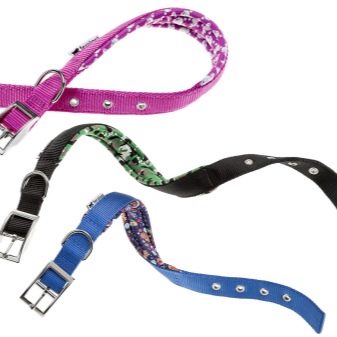
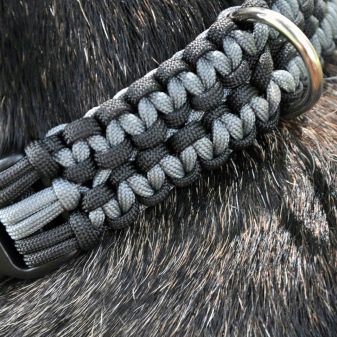
Dimensions (edit)
Dog collars are available in a wide variety of sizes, which allows you to choose an accessory for any dog. When choosing the right size, be sure to take into account the girth of his neck, the thickness of the coat, the temperament of the pet and the purpose for which the model is purchased. It should also be remembered that the collar should not be too tight on the skin and there should always be a gap. In addition, depending on the purpose of the model, the measurement of the dog's neck is made at different parts of it. So, when choosing everyday models, measurements are taken near the base of the neck, and 5 cm is added to the results.
When choosing a stranglehold, 6 cm is added to the neck girth, and when buying a "planer", measurements are made as high as possible and closer to the pet's ears, and the increase is 6-7 cm. When measuring the neck girth, the animal should stand or sit, and the measuring tape should not should be too tight.
Below is a table of chest and neck girth by breed, which will help you accurately determine the required collar length and not be mistaken with the choice.

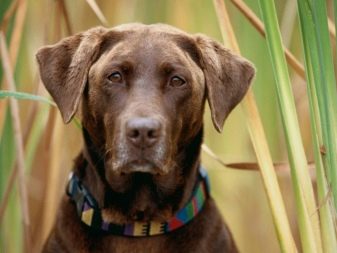
How to choose?
When choosing a collar for your pet, there are a number of important factors to consider.
- The product must be made of quality materials and not injure the animal's neck. For a small puppy or small dog, instead of a collar, it is better to choose a harness that will not put pressure on the neck and cause inconvenience to the animal.
- As an everyday model, it is advisable to purchase high-quality leather goods with several stitches. Such collars serve not a single year and do not lose their original appearance for a long time.
- You should not buy collars with decorations in the form of spikes, large rivets and other protruding elements. Despite their attractiveness, such models can injure the owner or other dogs with which the pet plays for a walk.
- It is also necessary to assess the quality of the fittings and check the performance of locks, fasteners, fasteners and carabiners. Models with plastic fittings can only be purchased for small dogs and for decorative purposes only.
- A canvas collar with a plastic restraint is perfect for puppies. Such a model can be constantly increased in size as the animal grows.
- A herring collar is recommended for dogs with sensitive necks such as dachshunds and most hunting breeds. The model has an extension in the middle part and is similar in shape to a fish. Such collars do not chafe the neck, do not twist and do not have a suffocating effect on the animal. In addition, they do not wash the coat and allow the animal to hold its head high.


How to put it on correctly?
Collar training should be performed from an early age. First, the baby needs to be given a sniff of the new accessory and only after that put it on the puppy. It is recommended to do this. in a calm home environment, just before feeding. A hungry baby will instantly lose interest in the collar and will be focused only on food. If the puppy is in no hurry to go to the bowl and starts scratching behind the ear, trying to take it off, then in such cases, you should distract the pet with a game or give him a favorite treat. You can wear a collar before going for a walk, but the food option is considered more effective.
Some experts recommend to train the puppy to the collar gradually, putting it on for 10-15 minutes 2-3 times a day and gradually increasing the length of the wear. However, this method is good only in case of complete rejection of the collar by the pet, since most puppies almost immediately get used to the new accessory. Particularly obstinate kids often show dissatisfaction and try to remove the accessory on their own.
The main thing at this moment is not to follow his lead and not help him to do it. Otherwise, a false model of behavior may take hold in the dog, which will be very difficult to correct.
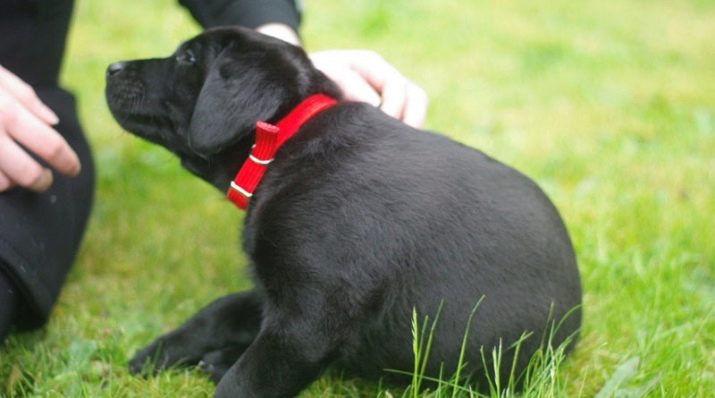
Care rules
In order for the collar to last as long as possible and look as good as new, it must be carefully looked after. Leather and metal models should be wipe regularly with disinfectant, and wash nylon and tarpaulins. In addition, metal collars and chains must be inspected regularly to prevent rusting. You also need to monitor the condition of the locks and the reliability of the fasteners and, if necessary, contact a shoe or leather goods repair shop in time.
If the collar is riveted, then you cannot put it on the dog, since the sharp metal rivet can injure the pet.


Tips & Tricks
Experienced dog handlers do not recommend putting someone else's collar on the animal, especially if it is made of a soft material - nylon, tarpaulin or leather. This is due to the rules of hygiene and dictated by safety requirements, since you can never vouch for the condition of the locks and carabiner rings of someone else's ammunition. It is also advisable to regularly check how the collar sits on the animal and relax it in time if it starts to squeeze the neck. This requirement is dictated by the fact that soft collar materials can dry out a little or stretch from constant temperature changes and frequent wetting / drying.
Moreover, during molting, the dog's neck itself changes in girth both in one and the other direction, which requires adjusting the length of the belt. It is also necessary to observe the uniform distribution of the load on the neck of the animal. For this, it is desirable that the collar buckle is not too close to the ring.And the last thing - collars made of soft materials, despite regular processing, should be changed from time to time for new ones and the pet should not be in a shabby and dirty accessory.
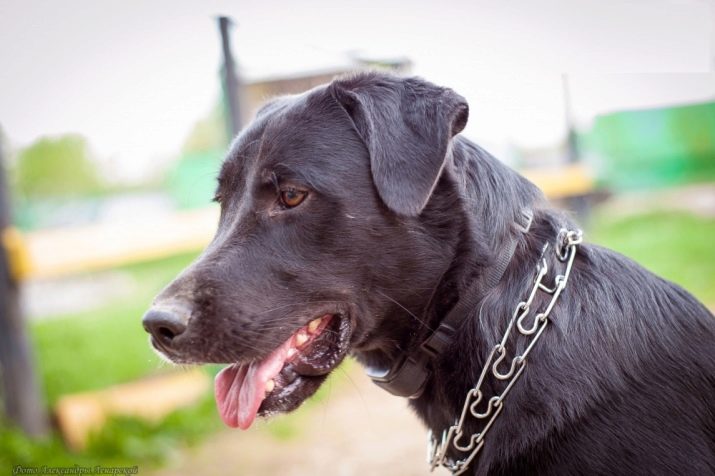
For information on how to choose a dog collar, see the next video.






































